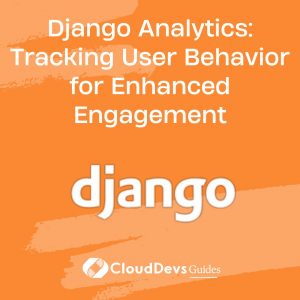Django Analytics: Tracking User Behavior for Enhanced Engagement
In the realm of web development, Django stands as a powerful and efficient framework for building robust web applications. Its capability to support complex data-driven websites is unmatched. But what truly elevates a Django-based web application is its integration with web analytics. This article delves into the world of Django and web analytics, focusing on tracking and analyzing user behavior. We’ll cover key methods, tools, and strategies to gain insightful data and examples to help you implement these concepts effectively. You can hire Django Developers for your projects to ensure greater success.
Table of Contents
1. Understanding User Behavior: The Cornerstone of Web Analytics
User behavior analytics is pivotal in understanding how users interact with your website. It involves tracking actions like page views, clicks, form submissions, and more. This data, when analyzed, can reveal patterns and trends that are crucial for optimizing the user experience and making data-driven decisions.
Example: Consider an e-commerce website built with Django. By analyzing user behavior, such as the most viewed products or the dropout rate at the checkout page, the site can be optimized to enhance user engagement and increase sales.
2. Integrating Web Analytics in Django
Django’s versatile nature allows easy integration with various web analytics tools. Google Analytics is one such tool that’s widely used. Integrating it into your Django app involves adding a tracking code to your templates and configuring it to send user interaction data to Google Analytics.
For Reference: Google Analytics Integration Guide
3. Collecting Data: Django and Server-Side Analytics
While client-side tools like Google Analytics are popular, Django’s server-side capabilities shouldn’t be overlooked. Server-side analytics in Django can track user behavior without relying on the client’s browser, offering a more comprehensive data collection.
Example: You can track the number of times a user downloads a file from your Django site. By logging these interactions at the server level, you ensure accurate tracking regardless of client-side issues.
For Reference: Django Server-Side Analytics
4. Analyzing Data: Tools and Techniques
Once data is collected, the next step is analysis. Tools like Pandas and NumPy can be used alongside Django to process and analyze large datasets. Visualization tools such as Matplotlib or Seaborn can then be used to represent this data visually.
Example: Use Pandas to analyze user session data stored in your Django database. This can help identify the most active times of day on your site, guiding you to schedule content releases or maintenance windows effectively.
For Reference: Data Analysis with Pandas
5. Real-Time Analytics and User Feedback
Real-time analytics can provide immediate insights into user behavior. Django Channels, a package that extends Django to handle WebSockets, can be used for this purpose. It allows the tracking of user actions as they happen, enabling immediate response and adaptation.
Example: Real-time tracking of user interactions in an online game can provide immediate data to adjust game difficulty or offer personalized promotions.
6. Privacy and Ethics in Analytics
While tracking user behavior is valuable, it’s crucial to do so ethically and in compliance with privacy laws like GDPR. Django’s robust security features can help in ensuring that user data is handled responsibly.
Conclusion
Integrating web analytics with Django offers a comprehensive view of user behavior, providing valuable insights that can drive strategic decisions and enhance user experience. The fusion of Django’s robust back-end capabilities with powerful analytics tools creates an environment where data-driven decision-making can thrive, ensuring your web applications are not only functional but also user-centric.
You can check out our other blog posts to learn more about Django. We bring you a complete guide titled Django and Accessibility: Building Inclusive Web Applications along with the Django and Scalability: Building Web Apps for High Traffic and Django Templates: Creating Dynamic and Responsive Web Pages which will help you understand and gain more insight into the Django programming language.
Table of Contents







